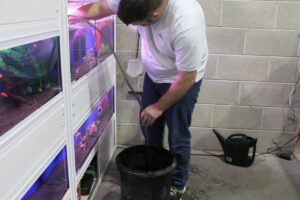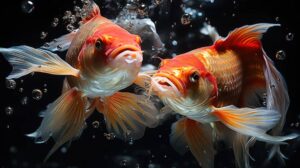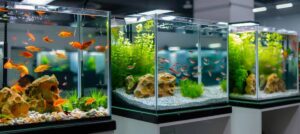The Pets Care Blog
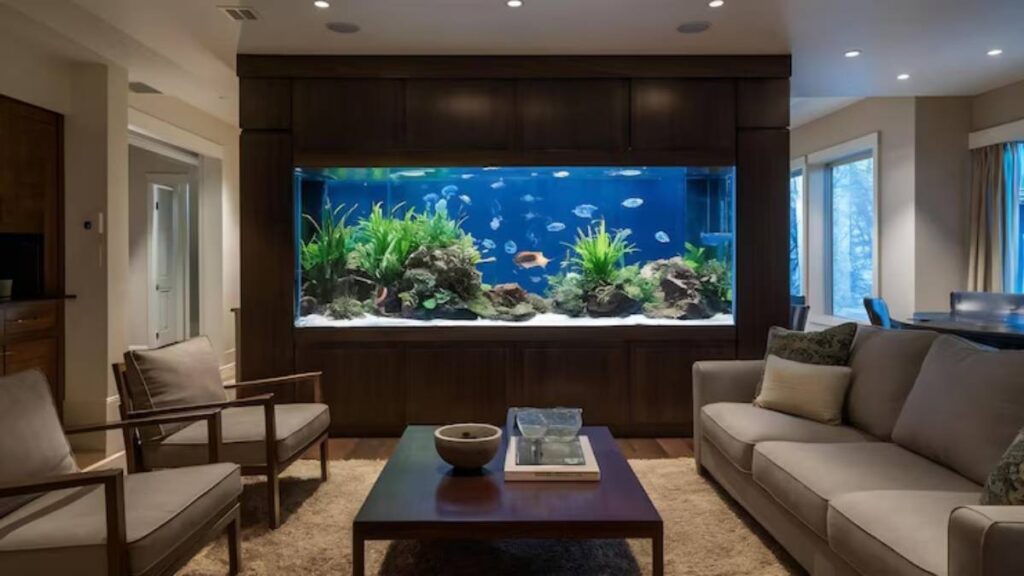
Best Room Conditions for Aquariums: How to Choose the Ideal Location and Control Temperature
Setting up your aquarium isn’t just about selecting fish or choosing the right filter — it also involves finding the perfect spot in your home where your tank can thrive. While a sunny windowsill might seem ideal or a kitchen counter convenient, the ideal room for an aquarium is one that promotes stability, not stress.
Fish are sensitive creatures. A few degrees of temperature swing, too much ambient noise, or inconsistent lighting can impact their health. That’s why temperature control and stable aquarium location are key to long-term success.
In this guide, we’ll walk through the best environmental conditions for aquariums, including how to choose the right room, avoid common placement pitfalls, and maintain stable temperature and humidity levels. Whether you’re keeping goldfish, tropical tetras, or a full reef setup, this article will help you build a reliable aquatic environment from the ground up.
Why Room Conditions Matter for Aquariums
Fish tanks are mini ecosystems. Like any habitat, they’re influenced by the space around them — temperature, light, airflow, humidity, and even daily household activity.
- Frequent temperature fluctuations
- Algae blooms from excess light
- Structural stress from vibrations or movement
- Water evaporation or condensation issues
- Fish stress and illness
Choosing the right environment from the start reduces maintenance, keeps your fish comfortable, and helps your equipment last longer.
What Makes an Ideal Room for an Aquarium?
No two homes are the same, but the best rooms for aquariums have a few key features in common.
1. Consistent Temperature
A room that naturally stays between 22–26°C is ideal. Sudden drops in temperature or overly hot rooms make it difficult for heaters or chillers to do their job efficiently.
2. Low Sunlight Exposure
Direct sunlight leads to algae growth and temperature spikes. Choose a room where you can position the tank away from windows, or use blackout blinds if necessary.
3. Low Foot Traffic
Busy corridors, slamming doors, or curious pets can stress fish. Choose a quieter space where the tank won’t be bumped or jostled regularly.
4. Good Ventilation
Fish tanks increase humidity. A well-ventilated room helps prevent mould and dampness, especially for large aquariums or tanks with open tops.
5. Stable Flooring
Weight matters. A 200-litre tank can weigh over 250 kg once filled. Place tanks on ground floors or over load-bearing walls for safety and support. For help with this, read Weight Considerations When Placing Aquariums.
Best Room Options for Fish Tanks: Pros and Cons
Living Room
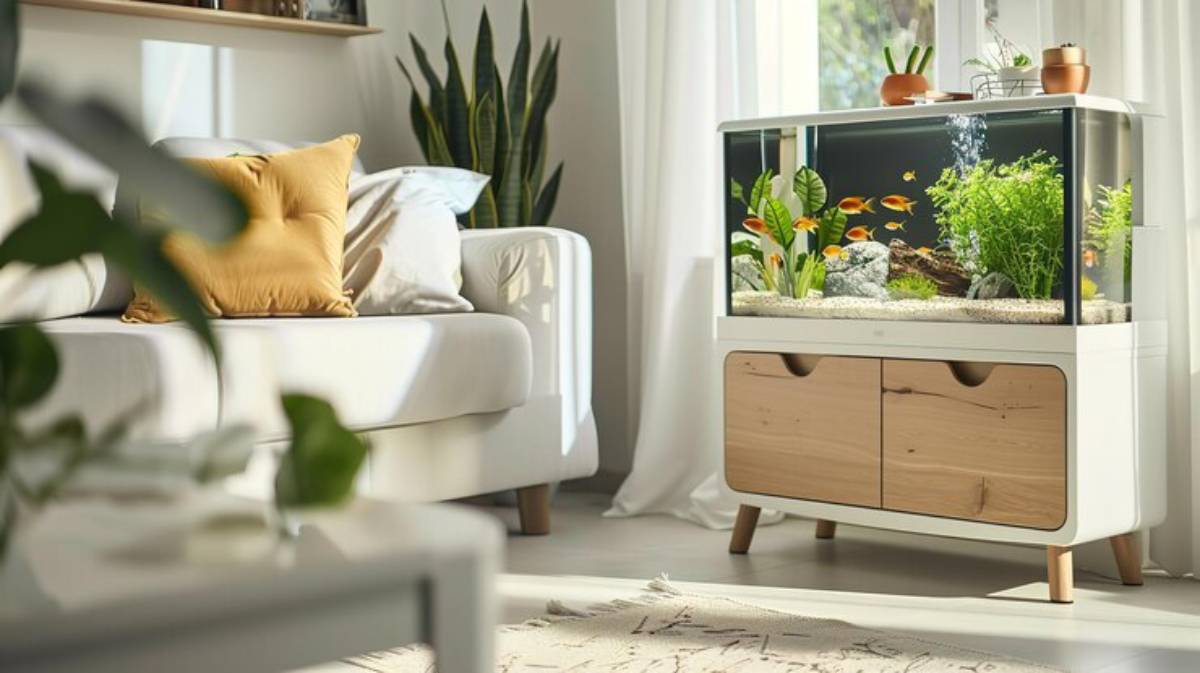
Pros:
- Great for visibility and enjoyment
- Typically moderate temperature
- Access to power sockets and space
Cons:
- Risk of TV or speaker vibrations
- Potential for high foot traffic
Keep tanks away from entertainment systems to reduce stress from noise.
Bedroom
Pros:
- Quiet and low traffic
- Easy temperature control
Cons:
- Filter or air pump noise may disrupt sleep
- Risk of spills on carpet or bedding
Use ultra-quiet equipment or place the tank across the room from your bed.
Home Office
Pros:
- Calm, controlled environment
- Encourages mindfulness while working
Cons:
- Risk of overheating from electronics
- May be too dry (especially with central heating)
Use a small desktop humidifier nearby to counteract dryness.
Kitchen or Dining Area
Pros:
- Convenient access to water
- Socially active space
Cons:
- Temperature and humidity swings from cooking
- Grease and fumes can impact water quality
Avoid placing tanks near ovens or stovetops.
Basement
Pros:
- Naturally cool
- Out of direct sunlight
- Low foot traffic
Cons:
- May be too cold or humid
- Risk of leaks unnoticed for long periods
Use a dehumidifier and monitor for mould or damp patches.
Managing Temperature Control in Fish Tanks
Room temperature affects your tank — and your heater — more than you might think. Aquariums are not insulated, so external temperature changes impact them quickly.
Factors that influence tank temperature:
- Room temperature range
- Proximity to heat sources (radiators, sunlight)
- Air conditioning or draughts
- Lighting heat output
- Aquarium lid or cover (open tanks evaporate faster)
Ways to maintain stable temperatures:
- Use a reliable heater rated for your tank size
- Add a digital thermometer for easy monitoring
- Consider a cooling fan or aquarium chiller in hot rooms
- Insulate the back of your tank if near a cold wall
- Keep lids on to minimise evaporation and heat loss
Even the best room will benefit from proper equipment support. And don’t forget to test water temperatures regularly — even once a day during seasonal changes.
Light Control and Its Impact on Aquariums
Light isn’t just for visibility — it also affects fish behaviour, algae growth, and plant photosynthesis.
Avoid:
- Natural sunlight, which fuels algae and causes temperature spikes
- Constant artificial lighting, which stresses fish
Aim for:
- 8–10 hours of consistent, moderate lighting daily
- LED lights with timers to maintain a regular cycle
- Room placement where light exposure is predictable (no sudden bursts of daylight)
Good lighting habits are easier when your tank is in a room with controlled exposure. Learn more about lighting options in Best Aquarium Lighting for Beginners.
Moisture and Air Quality Around the Tank
Fish tanks naturally add humidity to the room. While this is usually mild for small setups, larger tanks, especially open-top ones, can significantly impact air moisture.
Watch for:
- Window condensation
- Mould spots behind tanks
- Swollen wood or peeling paint
Solutions:
- Place the tank near a ventilated area or window (not in direct sunlight)
- Use a room dehumidifier if needed
- Wipe any condensation build-up on lids or lights
- Keep the tank slightly away from walls (2–3 inches) for airflow
Humidity problems often sneak up gradually. Regular inspection and small adjustments help you stay ahead of them.
Power Supply and Maintenance Access
Finally, no matter which room you choose, ensure it’s practical for maintenance and daily access.
Essentials:
- At least one nearby power socket (or use a surge-protected strip)
- Easy access for water changes, glass cleaning, and feeding
- Enough space around the tank for gear like buckets, nets, or test kits
A beautifully placed aquarium is no good if you can’t reach it easily without bumping things or crawling on the floor. Plan ahead — your back will thank you.
Conclusion: Plan the Living Room Before You Fill the Tank
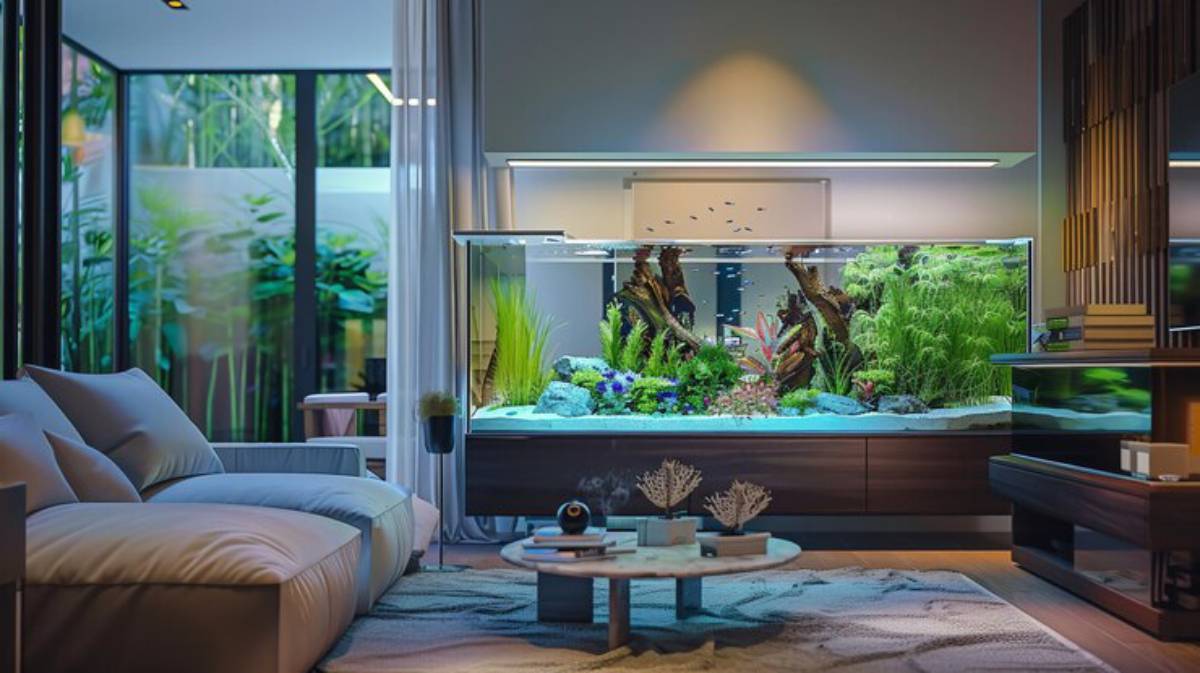
The best aquariums don’t just look beautiful — they work in harmony with their environment. From controlling room temperature and light to avoiding noise and ensuring stable flooring, your tank’s location plays a huge role in its long-term success.
Choose a space that’s calm, well-ventilated, temperature-stable, and easy to maintain. Your fish will be happier, your plants will grow better, and you’ll spend more time enjoying the tank rather than troubleshooting problems caused by poor placement.
Ready to choose your tank’s forever spot? Measure your space, monitor the room’s conditions for a day or two, and then confidently position your tank where both you and your fish will love it. Got a placement question or a tricky room layout? Drop a comment.




